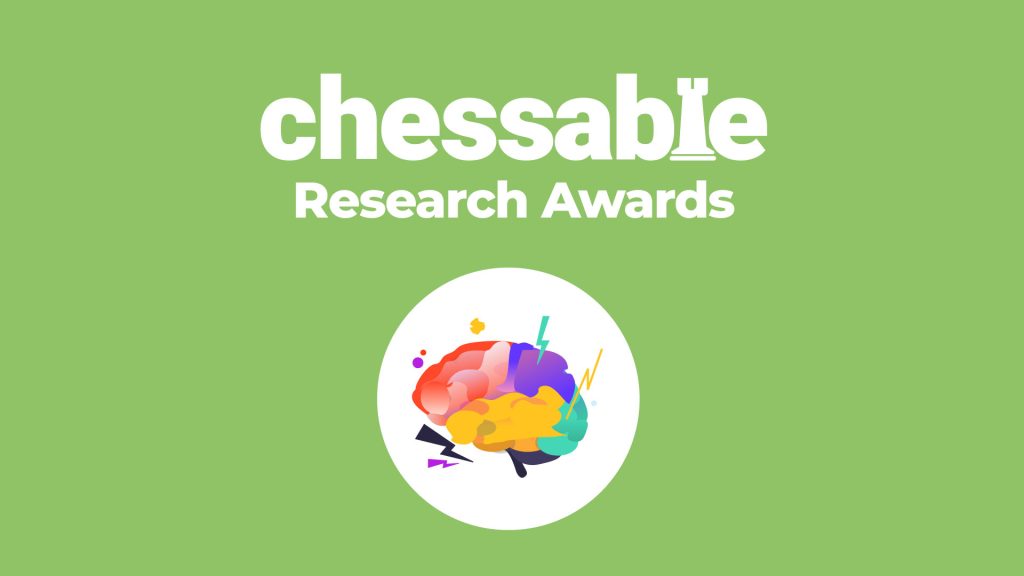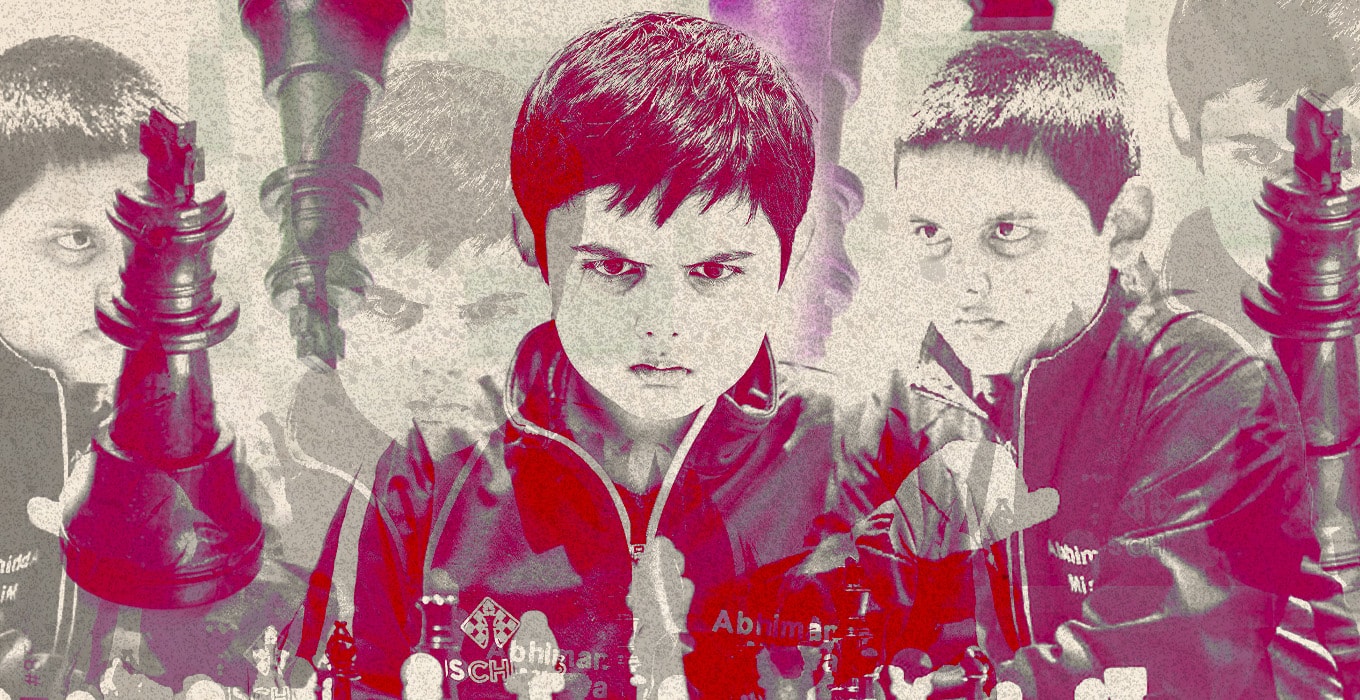The Chessable Research Awards for the Spring 2023 cycle had two winners, undergraduate student Sarah Kudron and graduate student Adam DeHollander. Applications for the Fall 2023 cycle open May 1, 2023.
In this blog post, Kudron and fellow student researcher Nick LoCassio, both of The College of New Jersey, define gender roles and stereotypes and look at how those may apply in chess. Then they ask Chessable users to participate in their research study.
It is no secret that gender roles and stereotypes have a strong influence on our day-to-day lives. Whether consciously or subconsciously, we hold beliefs about how men and women should behave within society. These stereotypes are developed at a very young age; we pick up on cues, subtle and overt, from family, friends, teachers, and popular media that can last well into adolescence and adulthood. When left unchecked, these beliefs can strongly influence the way we perceive ourselves, the jobs we pursue, how we interact with others, our familial and romantic relationships, and countless other areas of life. Receiving predetermined instructions on how to live our lives has an adverse effect on individuals of all genders. Our research team aims to understand the way these gender stereotypes work in the world of chess and bring awareness to their prevalence in all levels of gameplay.
The role of popular media in the development and reinforcement of gender role stereotypes has been of particular interest to cognitive researchers in recent decades due to the rapidly increasing consumption of television and social media by children. According to a 2021 survey, 8- to 12-year-olds spend about five and a half hours viewing screen media per day, while 13- to 18-year-olds spend about eight and a half hours per day. These rates grew by 17% from 2019 to 2021, suggesting that the pandemic has substantially increased media consumption in teens and tweens (The Common Sense Census, 2021). Considering the amount of screen time teens and tweens spend on media, it is important we consider the content and messaging that these media activities convey with a highly critical eye.
To do this, we must evaluate how gender is being represented in the media. A study conducted in 2020 found a significant underrepresentation of women in media targeting children; male characters outnumbered female characters 2.6 to 1 in G-rated movies and 2.5 to 1 in family films and Disney films. Furthermore, the women that appear are portrayed in ways that reinforce societal gender inequality, typically as one-dimensional beings predominantly characterized by their physical appearance, thinness, beauty, and sexual appeal. Meanwhile, men are represented as dominant and commanding, made to actively pursue sexual relationships, objectify women, and repress emotion in favor of sex (Ward & Grower, 2020). There is also little to no representation of individuals who identify outside of the gender binary (i.e., non-binary). Unequal and stereotypical representation of gender in adolescents’ media is damaging to individuals of all genders and can reinforce negative attitudes that reverberate for years.
Cognitive psychology suggests that it is in our nature to create categories and place things into them based on superficial characteristics. To reduce life’s complexity and noise, we tend to overemphasize common characteristics among members of a group and reduce differences between members. This applies to people we meet. To cope with the countless individuals that we encounter during our lifetime, we create social categories, which organize our social lives and streamline our interactions with others. Unfortunately, this makes us susceptible to developing stereotypes about groups of people, a process that often begins at a young age. In fact, research suggests that children can differentiate between men and women from as young as two years old. At around five years old, children can develop their own gender identity and associate themselves with stereotypical characteristics of that gender (Chung & Huang, 2021).
Gender stereotypes exist in the world of chess. In 2018, The New Yorker published a piece by Jenny Schweitzer highlighting the current gender stereotypes in tournament chess (Schweitzer, 2018). She wrote about the experience of girls who initially loved the game, but experienced gender-based harassment once they became a part of the male-dominated world of tournament chess. Her commentary is like the gender-based discrimination that is commonly found in the STEM disciplines and is consistent with chess-based research in natural settings (Rothgerber & Wolsiefer, 2014).
There is evidence that chess-relevant stereotypes impact the performance of male and female chess players. Maass et al. (2008) demonstrated the classic stereotype threat effect where women underperformed when they believed they were playing a male player. They found that female chess players were chronically less promotion-focused (and therefore more prevention-focused). Their finding supports our claim that highlighting the negative gender stereotype will activate a prevention focus and that exposing men to a positive stereotype will activate a promotion focus.
That’s where you come in! We want to further investigate the effects of gender stereotypes on chess players and are looking for chess players to complete our study. We are looking for intermediate chess players who are at least 18 years old, fall within the US Chess Elo range of 1000-1400, and are familiar with writing moves in chess notation. We welcome individuals of ALL gender identities to participate! Participants will solve a series of 30 chess puzzles of varying difficulty by writing moves in chess notation. Several questions about chess identity and demographics will be asked. We would greatly appreciate your participation in our study and thank you for helping to advance the chess community’s understanding of the impact of gender stereotypes!
To participate in this study, please click on this link:
https://tcnj.co1.qualtrics.com/jfe/form/SV_3x7cDCZcNyBqHJA
References
Chung, Y., & Huang, H. H. (2021). Cognitive-based interventions break gender stereotypes in kindergarten children. International Journal of Environmental Research and Public Health, 18(24), 13052.
Common Sense Media. (2022, March 9). The Common Sense Census: Media use by tweens and teens. https://www.commonsensemedia.org/research/the-common-sense-census-media-use-by-tweens-and-teens-2021
Maass, A., D’Ettole, C., & Cadinu, M. (2008). Checkmate? The role of gender stereotypes in the ultimate intellectual sport. European Journal of Social Psychology, 38, 231–245.
Rothgerber, H., & Wolsiefer, K. (2014). A naturalistic study of stereotype threat in young female chess players. Group Processes & Intergroup Relations, 17(1), 79–90.
Schweitzer, J. (2018, August 8). The girls fighting stereotypes in the world of scholastic chess. The New Yorker. https://www.newyorker.com/culture/culture-desk/the-girls-fighting-stereotypes-in-the-world-of-scholastic-chess
Ward, M., & Grower, P. (2020). Media and the development of gender role stereotypes. Annual Review of Developmental Psychology, 2(1), 177-199.
Applications for the Fall 2023 cycle of the Chessable Research Awards open May 1, 2023. The Chessable Research Awards are for undergraduate and graduate students conducting university-level chess research. Chess-themed topics may be submitted for consideration and ongoing or new research is eligible. Each student must have a faculty research sponsor.
Each winning undergraduate student gets $500, and their faculty research sponsor also gets $500. Each winning graduate student gets $1,000, and their faculty research sponsor gets $500. There are three cycles of Chessable Research Awards given each year. For more information, or to apply, please go to chessable.com/research_awards





